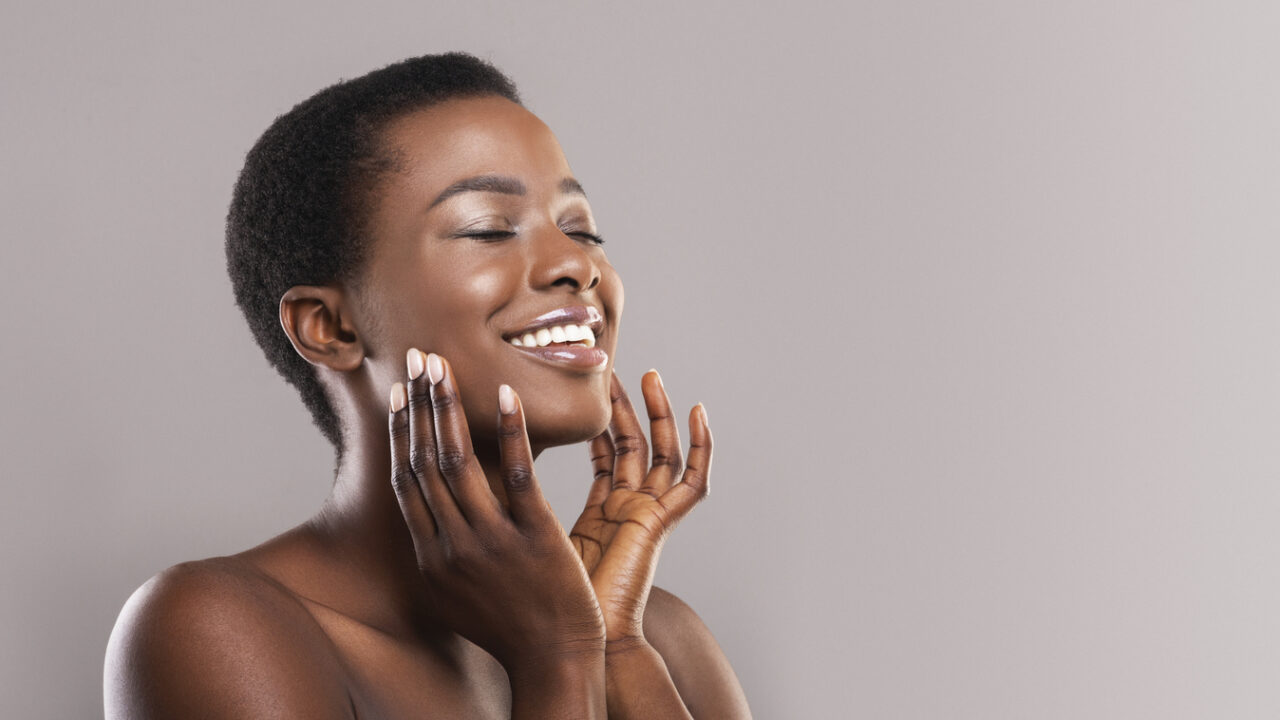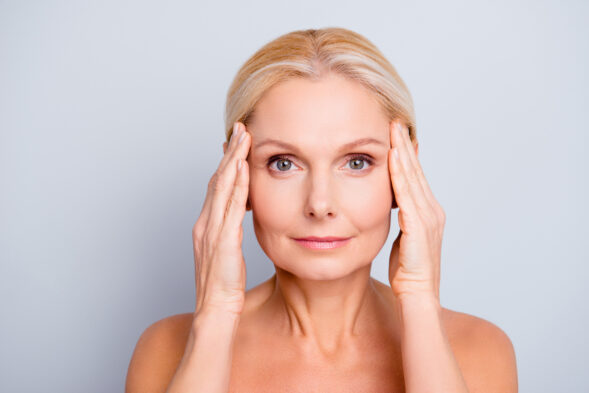
Every day your skin is exposed to myriad things that can make it appear dull and tired. Whether that’s sun damage, environmental toxins, or other irritants. You may regularly wash your face, or get facials, but there is another way to help your skin and make your normal skincare routine have a bigger impact – dermaplaning.
Dermaplaning is a way of exfoliating your face by removing the top layers of your skin. First and foremost it’s a superficial exfoliation treatment that gets rid of dirt and improves your skin’s health and texture.
By getting rid of the dead skin on your face, it means your face care products can go deeper and work better. Another positive outcome of dermaplaning is that it gets rid of the short, soft hair on your face called vellus hair (also known as peach fuzz), making your skin look and feel even smoother.
For in-salon dermaplaning, a dermatologist or skincare expert will use a surgical scalpel or specialist razor to remove the superficial layer of your skin.
The procedure usually takes around 30 minutes per treatment. The blade is aimed at a 45-degree angle and is slowly dragged across the skin removing dead skin cells, scar tissue, and other debris. It’s regarded as a very effective skincare treatment and most women have noticeably better skin after their first treatment.
“When (dermaplaning is) done well, skincare products are able to penetrate deeper into the skin, radiance is improved and make-up sits better and smoother on the skin,” explains Dija Ayodele, skincare expert and author of Black Skin, The Definitive Skincare Guide.
 Getty Images/iStockphoto
Getty Images/iStockphoto Dermaplaning sounds like a miracle procedure for your face, but because of that, it can be costly to have it done professionally. Your skin naturally replaces skin cells every month, so you’re going to want to have a dermaplaning treatment monthly to get the best results.
It costs approximately £40 – £70 per treatment, so you’re looking at spending £480 – £840 annually.
To have it done you’ll most likely be laid down in a chair and they’ll use either an electronic or manual dermaplaning tool. You may be offered a numbing spray or local anaesthesia to sedate the skin before treatment.
Once the dermaplaning procedure is over you’ll likely have an aloe gel applied to your face. It’s also recommended to have suncream put on your face because it will be more vulnerable to sunlight at this point.
It is possible to do a form of dermaplaning at home and there are various tools you can buy. Jump to our dermaplaning at home section below to find out more about this.
Dermaplaning was originally used as a treatment for acne scarring because it dramatically reduces the appearance of acne scars and removes discolouration because it encourages new skin growth.
DERMAPLANING BENEFITS
The procedure can help the appearance of other scarring too because it helps even out the texture of the skin from scarring. Just to note though, it shouldn’t be used on active acne because it can cause flare-ups by spreading bacteria.
Other than helping to make scarring less noticeable, dermaplaning is now more commonly used to help reduce fine lines and wrinkles, aided by enabling other skin products to penetrate better.
It removes dead skin and hair, meaning it can improve the brightness of your skin and improve your skin’s texture.
Losing the top layer also means your other skincare products will be able to penetrate better and be more effective, too.
Elsewhere, dermaplaning can help your makeup look more natural, particularly when applying foundation because the skin surface is more even and smooth.
After your first dermaplaning treatment you’re going to see an instant improvement in your skin texture and tone. It may take a little longer for the fewer wrinkles and dark spots to be noticeable.
Even though dermaplaning is improving the dryness of your skin in the long run, by getting rid of any dead skin cells, don’t be alarmed if initially, your skin feels tight and dry.
The results from dermaplaning are different for everyone, so it’s worth giving it a try to see how much better your skin feels afterward.
Although the main aim of Dermaplaning is to improve your skin, lots of women are doing it to remove the fluffy hair on their faces. It’s essentially like a full-face shave for women.
The hair on your face is officially called, ‘vellus,’ but is regularly referred to as, peach fuzz, whiskers or baby fuzz. As we get older, or as a result of polycystic ovaries, the downy hair on our faces can become denser, which can lead to you feeling insecure and having low self-esteem.
If you’re worried your hair will grow back thicker and darker after dermaplaning, don’t be. It’s not a permanent solution to hair removal, but when it does grow back it won’t grow back through thicker and darker. This is because it’s removing the hair before the follicle, meaning the hair will grow back as it did before the treatment.
There is however a chance of ingrown hairs from dermaplaning, but these can be prevented and treated by exfoliating and cleansing your face before and after treatment (although leave that for a few days afterwards).
FURTHER READING: Best hair removal cream: Fight the fuzz with our fave hair removal creams from Veet, Nair and more
Dermaplaning is a safe, non-invasive treatment, but ideally, you’re going to want to have it done by an expert.
At least for your first time trying dermaplaning, make sure you visit a reputable dermatologist.
There are lots of women that do dermaplaning at home, but you’ve got to make sure you have the right tools and techniques.
Otherwise it can be risky.
“Without knowing the correct technique, such as the right angle and how you should hold the blade, you can easily cut the skin and this can lead to infection,” said Maja Swierczynska, the lead aesthetic practitioner in London’s STORY clinic and dermaplaning trainer at Harley Academy.
MB recommends: The dermaplaning tools we’ve used and can recommend include the Hollywood Browzer (£14.95) and JML Finishing Touch Dermaplane Glo (£19.99) pictured here
If you’re wondering whether dermaplaning will hurt during the treatment you needn’t worry because it feels more like light, feathery strokes across your face. Compared to waxing, having your hair lasered, or threading, dermaplaning is more like shaving, so it’s more comfortable to have done.
Dermaplaning treatments are suitable for most people, however, there are some instances where it’s not advised to be done. For example, if you have excessively oily skin then your pores could get blocked because the oil is unable to cling to the vellus hair that’s been removed.
Although dermaplaning is pain-free, there can be some side effects including the risk of infection, redness, discolouration, irritation, or skin breakouts. There’s a slightly higher risk of tiny cuts or grazes on your skin if you have uneven skin texture.
That’s why it’s vital for you to get your dermaplaning done right, whether that’s with a professional or by yourself. It’s also worth speaking to an expert before having dermplaning done if you fall into any of the following categories:

Kat is a freelance journalist, photographer, and the founder of Simply Gender Free – a company dedicated to smashing gender stereotypes in kids’ products. As a mum of two, Kat is passionate about making the world a better place for the next generation
